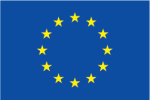We have already explained in a first post what nudges are and the mechanisms on which they are based. Today we are going to talk about a specific type of nudge: moral nudges.
There are a large quantity of nudges, classified according to categories. Here are a few of the more well-known categories (this list is obviously not exhaustive):
• Messenger: we are highly influenced by the person who transmits certain information to us (this is the famous “white coat effect”).
• Incentive: due to various cognitive biases that modulate our thinking, some of our reactions can be predictable to some extent. For example, we have an aversion to loss that is sometimes stronger than the possibility of gain, and this can cause us to make irrational choices.
• The default option: we tend to stick to the options presented to us by default. That is why some of the features on our devices are turned on by default: we’re unlikely to change the settings.
• Reminders: since we all, to some degree, have a tendency for procrastination and inertia, simple reminders can be interesting tools to change some of our behaviours.
• Simplification: simplified and more intuitive procedures allow us to be more involved and applied. On the contrary, increasing the “granularity” of an approach can dissuade some people from carrying it out.
• Warnings or graphics: this nudge is based on the fact that our attention span is limited and that the most salient elements will not only hold our attention more easily, but also have an impact on our behaviour. For example, you may have seen speed cameras in your cities that tell you how fast you are driving. These speed cameras are only indicative, they do not generate any fines. However, the simple act of seeing the number displayed in this way often causes us to slow down our pace.
• Commitment: we tend to want to be consistent when we make a commitment to do something, especially when that commitment is made in front of others. In the context of this type of nudge, the use of a signature is often an interesting lever.
• Reference to the social norm: we are going to talk at length on this type of nudge, but you will think of this type of nudge the next time you see a sign in the bus that says “95% of users buy their ticket… and you?”


Leave a Reply